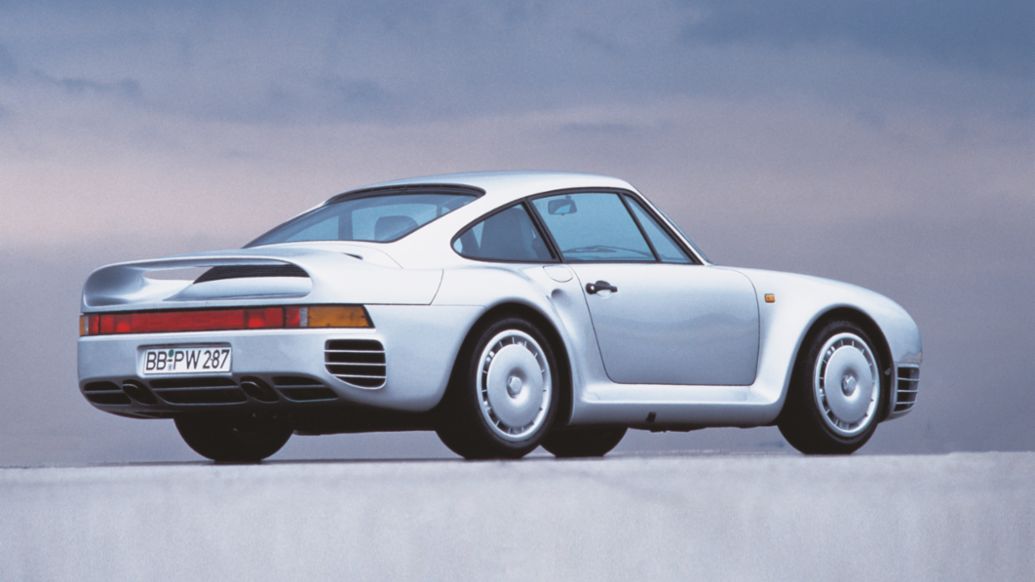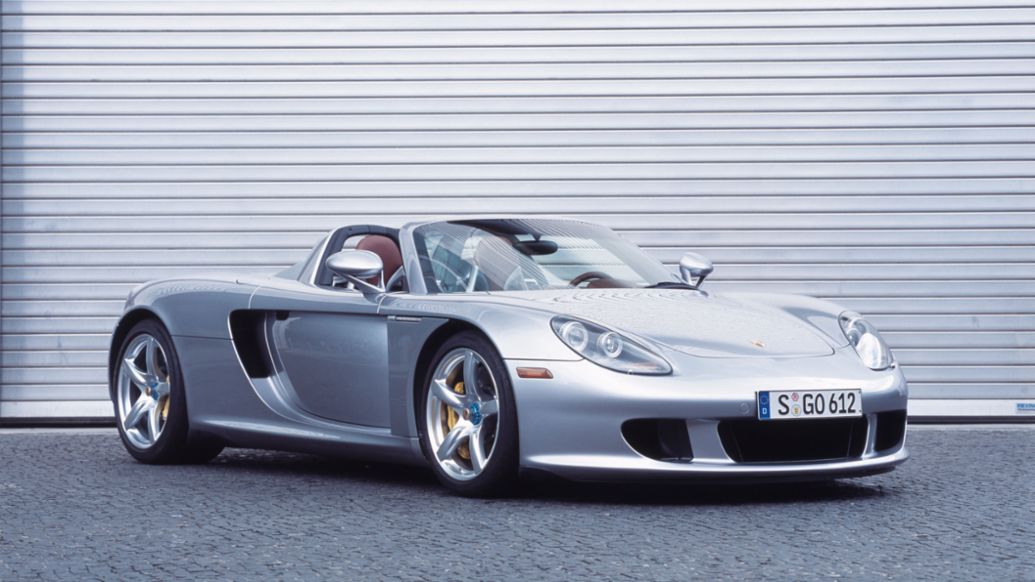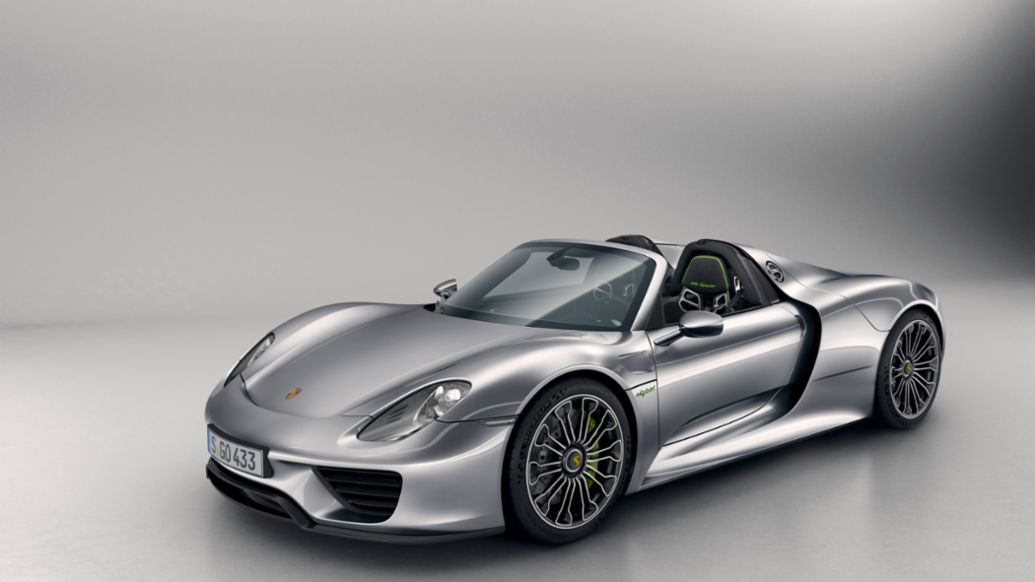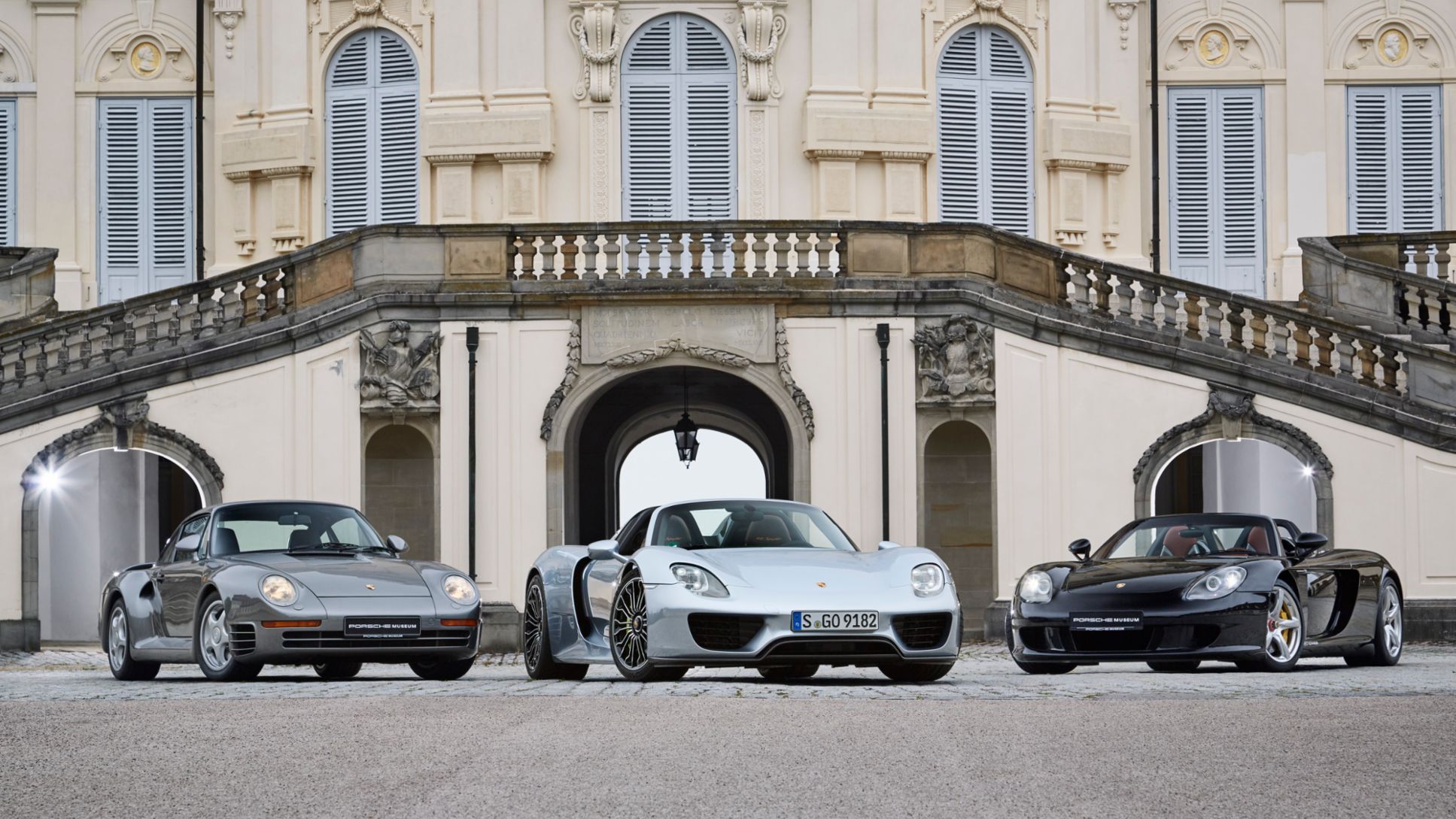The fastest series-production vehicle of its time; the first series-production Porsche to be made of carbon fibre, or the first vehicle with international road-legal status to beat the seven-minute mark on the Nürburgring Nordschleife – the Porsche 959 (1985), Carrera GT (2003) and 918 Spyder (2013) were milestone models in the world of super sports cars. And that makes them the conceptual forerunners of the Mission X.

959: technology platform with a speed record
For many car enthusiasts, the 959 is one of the most exciting sports cars of the last century. In 1983, Porsche presented the ‘Group B’ study, designed to meet the regulations for this spectacular rally class, at the IAA. In the 1986 Paris Dakar Rally, all three 959s finished the race, taking first, second and sixth places.
The production model made its debut at the IAA in 1985. Its innovations included speed-sensitive and adjustable dampers, self-levelling suspension, electronically controlled variable all-wheel drive with driving programme selection and ABS, a tyre pressure monitoring system and an aerodynamically optimised body (Cd 0.31). The outer skin was made of Kevlar and glass-fibre-reinforced epoxy resin in a hybrid construction, while the front spoiler was made from polyurethane integral foam. The doors and front compartment cover were made from a special aluminium alloy.
The 959 was the first production car to feature a twin-turbo boxer engine with sequential turbocharging. the two turbos operating in sequence helping to reduce turbo lag. Titanium conrods reduced the oscillating masses on the crankshaft. Its powerful engine, combined with an aerodynamically optimised body, propelled the super sports car to an impressive top speed of 317 km/h – then the world record for a series-production sports car. Only 292 examples of the Porsche 959 were built in series production from 1987 to 1988.

Carrera GT: dramatic design coupled with many innovations
After the spectacular showing of the near-production-ready concept at the Paris Motor Show three years previously, the Porsche Carrera GT celebrated its world premiere in Geneva on 3 March 2003. The high-performance sports car was built in limited numbers at the Porsche Leipzig plant. Its V10 naturally aspirated engine produced 450 kW (612 PS) and was blessed with thoroughbred racing genes. It was assembled at the Zuffenhausen engine plant. From autumn 2003 to early May 2006, 1,270 examples of the Carrera GT – internally known as the Type 980 – were hand-built in Leipzig.
With its engine, dramatic design and, not least, its incomparable driving experience, the Porsche Carrera GT remains an icon among super sports cars to this day. For the first time in a series-production Porsche, the monocoque chassis and unit carrier were made entirely of carbon-fibre-reinforced plastic (CFRP). The two halves of its Targa roof can be stowed up front in the luggage compartment. Another of the exceptional developments in the Carrera GT was the Porsche Ceramic Composite Brake (PCCB). Not only were the two brake discs made of ceramic material, but the model also featured the world’s first ceramic double-plate dry clutch. Other innovative details included superlight seat shells made of Kevlar and double-wishbone pushrod suspension with inboard springs and dampers.

918 Spyder: unique all-wheel drive concept with hybrid powertrain
The 918 Spyder made its debut as a production car at the IAA 2013. A few days before the show, in September 2013, a prototype broke a world record: the two-seater became the first internationally road-legal vehicle to break the seven-minute barrier on the Nürburgring’s 20.6-kilometre Nordschleife, with a time of 6:57.
Maximum performance and minimum fuel consumption resulted from a unique plug-in hybrid concept. The driver could choose between five driving modes, which optimally controlled single-source or mixed drive scenarios with the 4.6-litre V8 engine with 447 kW (608 PS) and the two electric motors with a total of 210 kW (286 PS).
The 918’s driving dynamics became a tangible reality through the unique all-wheel drive concept, which featured a combined powertrain of both combustion engine and electric motor on the rear axle, plus a second electric motor on the front axle. The concept was based on insights gained by Porsche while racing with the successful 911 GT3 R Hybrid. This model and the Cayenne S Hybrid, the first series-production hybrid in the company's history, were presented by Porsche in Geneva in 2010. The motto at the time was ‘Intelligent Performance’ – an idea as timeless as the icons of model history.

